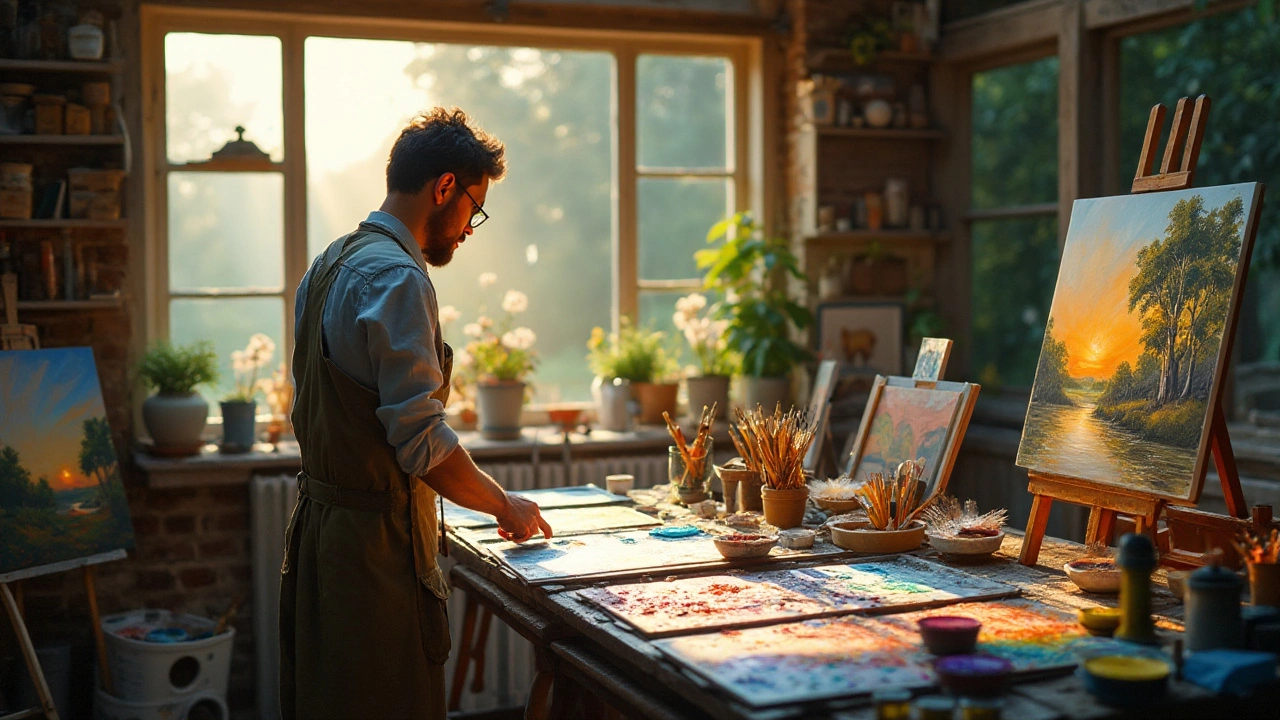Oil Paint Activation: Simple Ways to Make Your Paint Work Better
If your oil paint looks dull or takes forever to dry, you’re not alone. Most artists hit this snag at some point, but a few easy tricks can get the paint moving again. Below are the basics you need to know right now.
Warm Up the Paint
Cold paint sticks to the canvas and dries slowly. Before you start, let your tubes sit in a warm room for 15‑20 minutes or give them a quick roll in your hands. Warmth helps the oils flow, so you’ll see a smoother glide and faster drying.
Mix the Right Medium
Pure pigment can be thick and stubborn. Adding a few drops of linseed oil, walnut oil, or a ready‑made medium cuts the thickness and activates the pigments. Start with a 1:1 ratio of paint to medium, then adjust until the consistency feels right for your brush.
For faster drying, blend a tiny amount of a solvent like odorless mineral spirits. Too much solvent makes the paint brittle, so keep it under 10% of the total mix.
Use Thin Layers First
The "fat over lean" rule isn’t just for professional studios; it works for any project. Begin with thin, lean layers using less oil. Once those dry, add richer, fatter layers on top. This method prevents cracking and speeds up the overall drying time.
If you need to speed up a specific area, apply a glazing medium on that spot only. It creates a thin film that dries faster than a heavy paint layer.
Control Your Environment
Humidity and temperature have a big impact. Aim for a room temperature of 70‑75°F (21‑24°C) and low humidity. A small fan can improve airflow without blowing dust onto your work.
Avoid direct sunlight; it can cause uneven drying and make colors look different. A steady, moderate light source is best.
Revive Dry Paint
Got a dried-out tube? Add a few drops of linseed oil or a dedicated paint reviver. Mix well and you’ll have fresh, usable paint again. This trick works for both new and old tubes.
If the paint has formed a thick skin, scrape off the top layer and blend the remainder with a fresh medium. You’ll regain the original texture without wasting pigment.
Quick Fixes for Common Problems
Paint looks muddy: Add a touch of a bright, pure color or a small amount of turpentine to lift the muted tones.
Brush marks appear: Lightly sand the dried layer with fine grit sandpaper, then reapply a thin glaze.
Cracking: Moisturize the painting with a thin coat of medium and let it sit for a day. The extra oil helps the cracks seal.
These fixes are fast, cheap, and keep your work looking professional.
Ultimately, activating oil paint is about temperature, the right mix, and a bit of patience. Try these tips on your next canvas and notice the difference right away. Happy painting!

7 Nov 2024
Explore the myriad ways to activate oil paint and bring your artwork to life. Discover the different mediums and tools that affect the texture, drying time, and vibrance of oil paints. Learn practical tips to enhance your painting technique and create stunning masterpieces effortlessly. From understanding traditional methods to experimenting with modern solutions, this article provides a comprehensive guide for artists looking to deepen their practice.
Continue reading...
